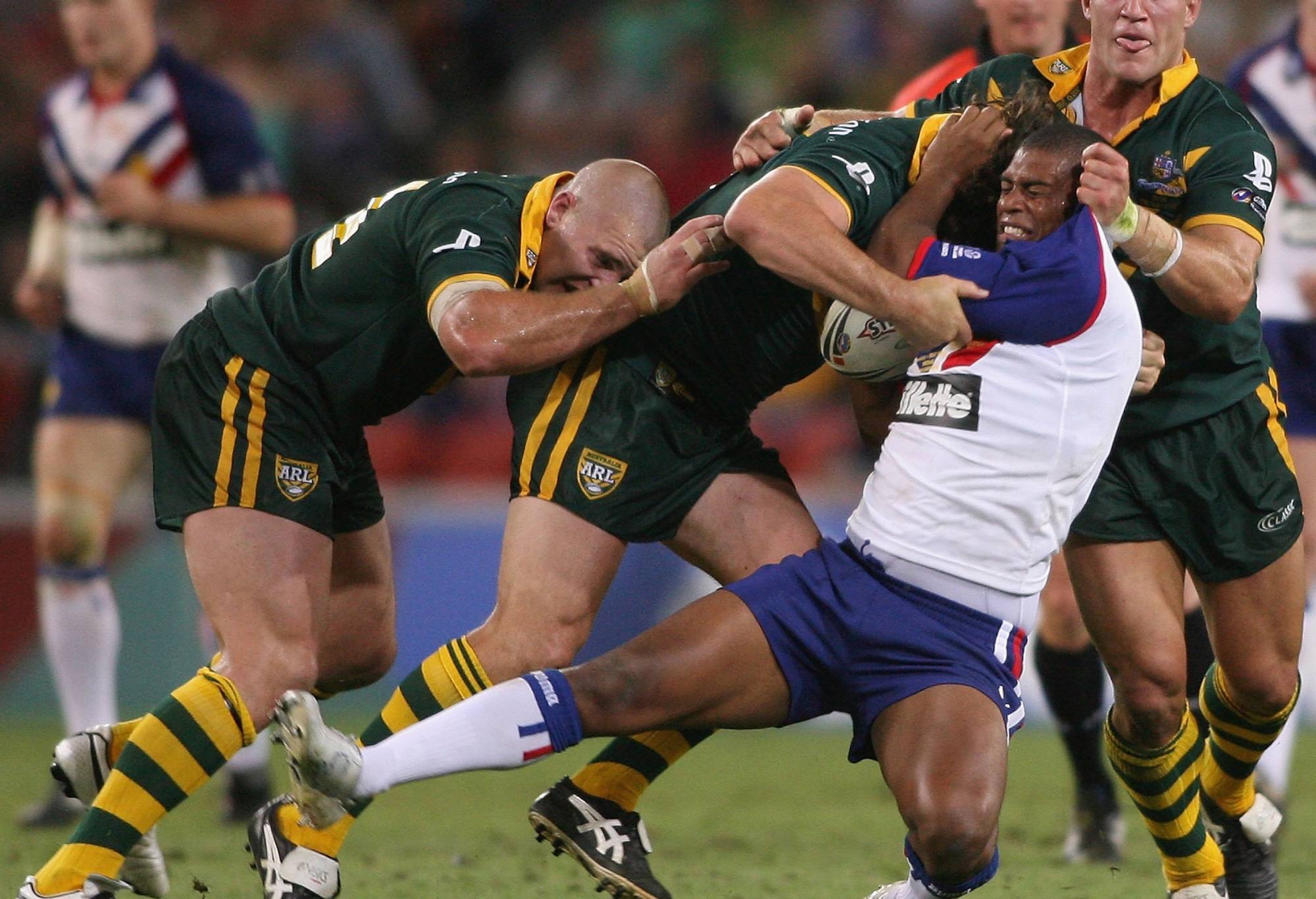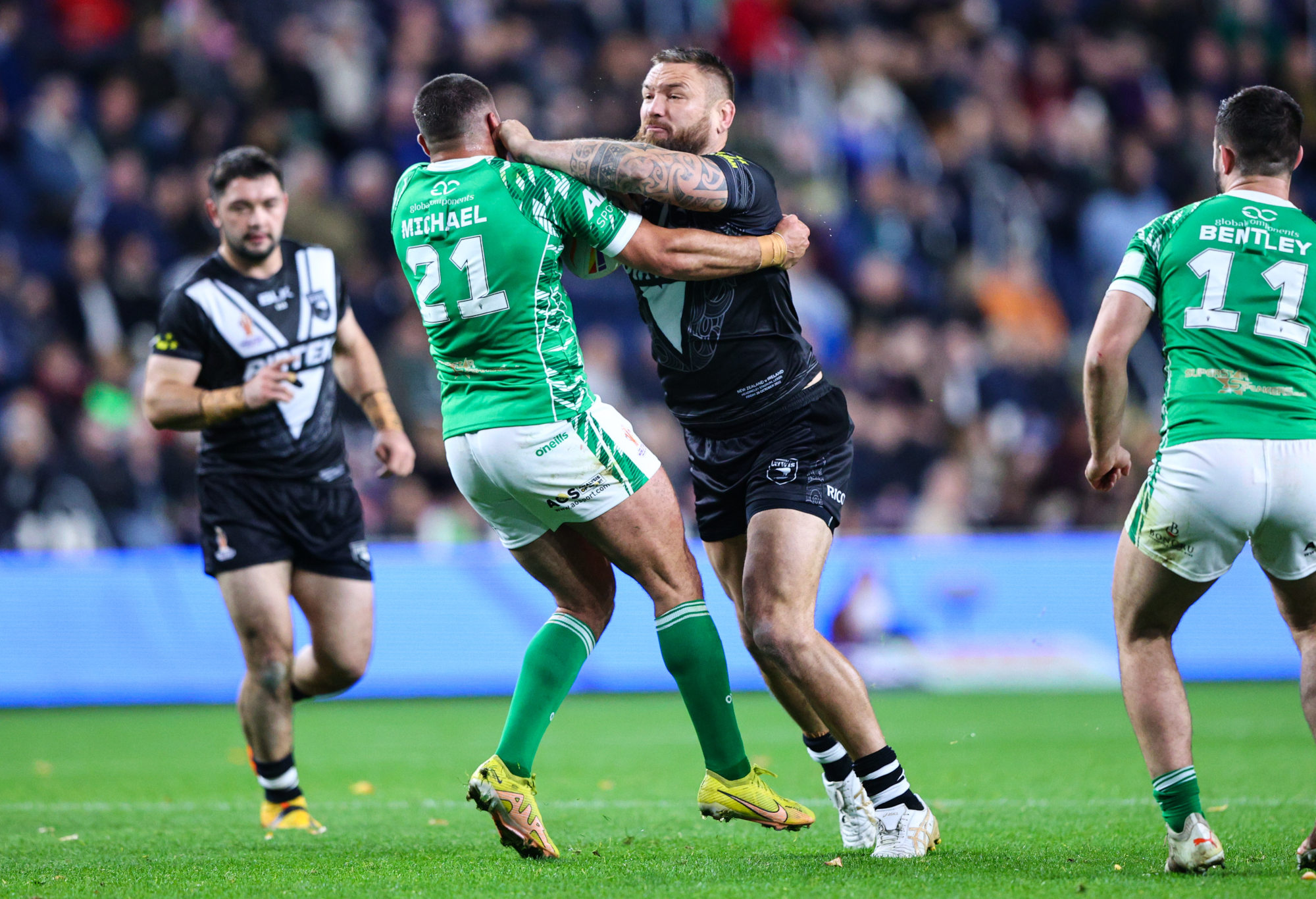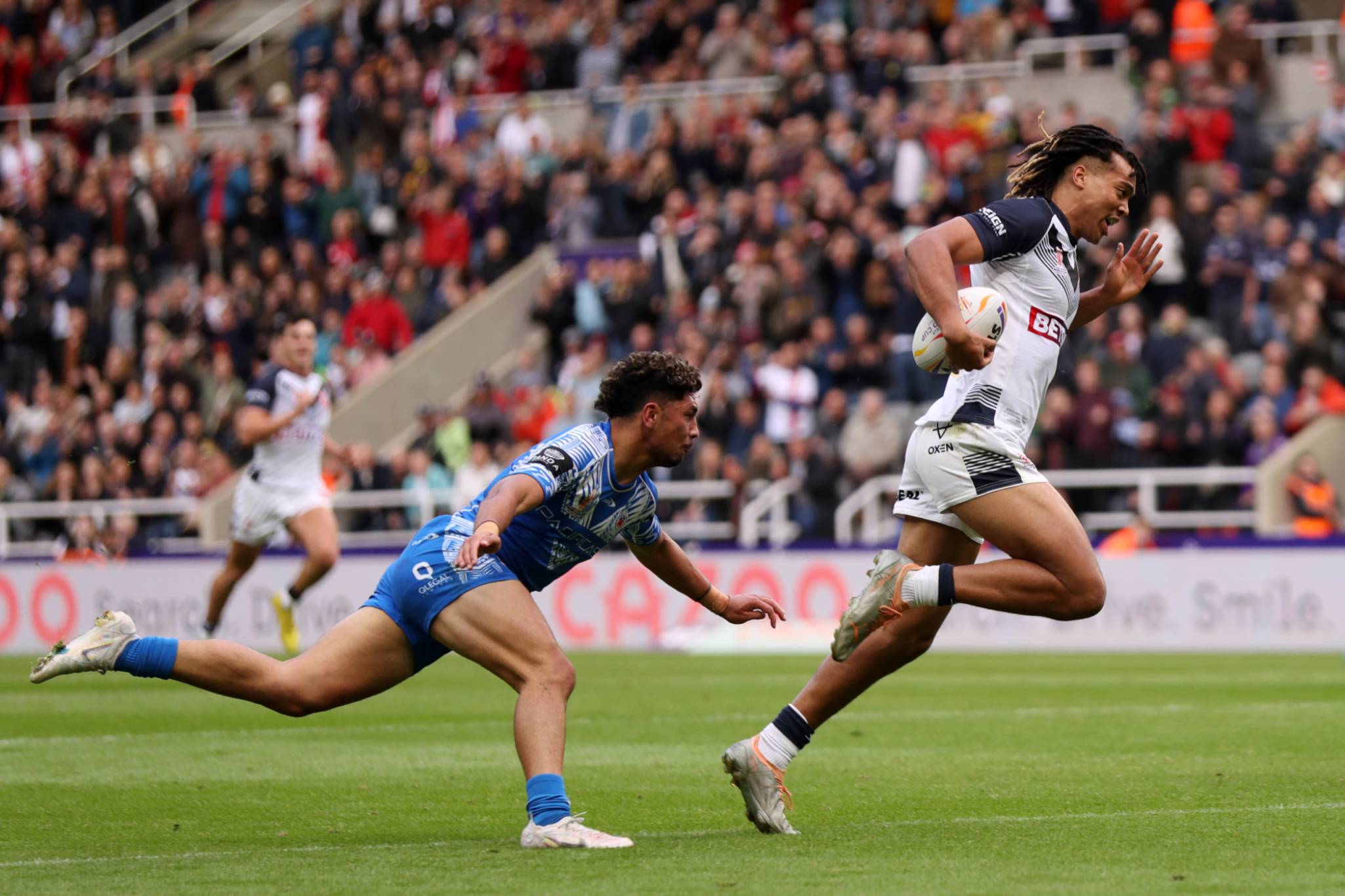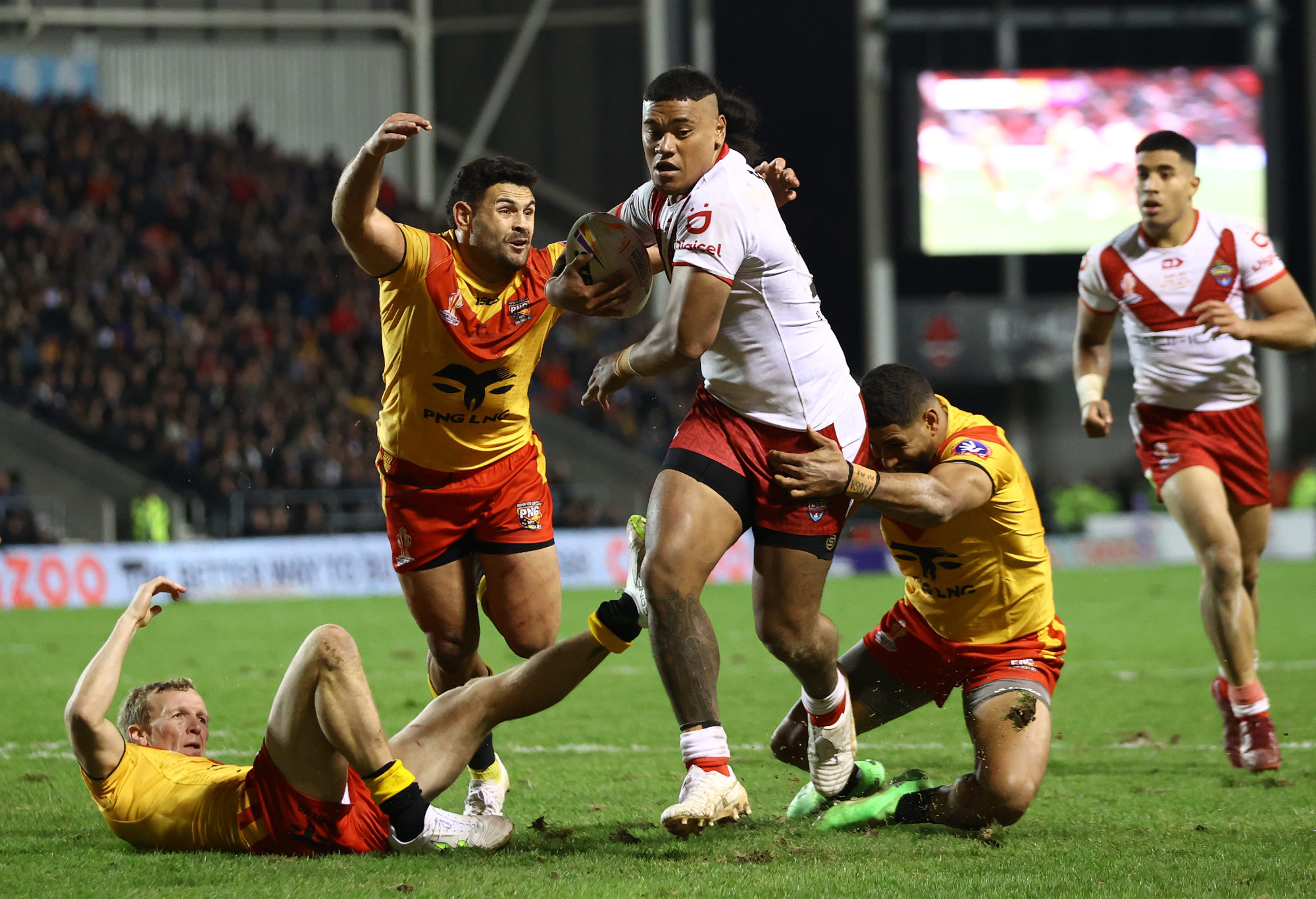It's not un-Australian to cheer against Australia - in fact, in our favourite sports, it is the best option
Australians are among the sportiest people on Earth. Much as we like to play code wars with each other, the fact that we can…
Rugby league, since 1895, has made an art form out of false dawns. The international arena might be the area that has seen the most of them.
The running joke is that the league-loving child learns the meaning of the word ‘inaugural’ well before their mates, because everything is inaugural, then never seen again.
The sport, as eminent rugby historian Tony Collins put it, never misses an opportunity to miss an opportunity, and it was perhaps understandable that the widespread reaction to the global governing body, International Rugby League (IRL) releasing a fully formed, planned out, agreed, set in stone international calendar was: I’ll believe it when I see it.
Rugby league fans, especially those of an internationalist bent, are well accustomed to having their hopes raised and then dashed.
To paraphrase another eminent Tony C – the socialist historian Tony Cliff – the international game rises like a rocket and falls like a stick.
Tonga beat the Kangaroos in a breakthrough moment, then a pandemic keeps them from playing for three years. A World Cup goes ahead and is widely enjoyed, then the next one gets cancelled because the hosts can’t get the cash. Rinse and repeat.
As much as some were excited to see the headline news, there were notable malcontents, who saw the streamlined international calendar as removing a tier of the most exciting aspects of the sport in recent years, namely the growth of nations beyond the traditional powerhouses.
We’ll get to that, but those headlines, in case you missed them, were as follows.
The World Cup, initially planned for 2025 in France but removed from that nation due to lack of government support, is to be pushed back to 2026 and played in the Southern Hemisphere, with either Australia or New Zealand hosting.
The Men’s competition will also be reduced from the 16 teams that played in last year’s event to just ten teams, with the eight quarter finalists from 2021 qualifying automatically, with two more to be added via qualifiers.
The Women’s and Wheelchair World Cups will continue alongside the Men in 2026, but the Women will then split off for a standalone tournament in 2028, enabling the IRL to have a World Cup in some form every two years, with the next Men’s edition to follow in 2030. Nines, by the way, are dead and gone.
The secondary tournaments are back, with The Ashes, Kangaroos Tours, Kiwi Tours back on the agenda and a Tri/Four Nations happening every year among teams not touring.
Regional competitions – organised by the various continental confederations – are to be foregrounded, with the goal of giving smaller nations the chance to play against other nations of their own standard.
Notably, as many pointed out, this is what they get instead of playing at a World Cup, which for all but two of them in each cycle, will now be impossible.

(Photo by Bradley Kanaris/Getty Images)
Those that don’t qualify will enter a World Series, designed as a global competition for second-tier nations.
IRL Chair Troy Grant described the lack of a calendar as the sport’s “Achilles heel”, which had long held rugby league back.
Others have seen this calendar, particularly with the contraction of the World Cup, as pulling up the drawbridge on smaller nations and further concentrating on the elite, clustered around the players in the NRL and, to a lesser extent, Super League.
So which is it? Let’s run through the winners and losers.
Undeniably, this is a huge win for the organisation that actually runs the international game.
Grant previously called the global governing body a ‘tuck shop operation’ and he was right to do so: they had barely any power, barely any money and barely any prospects of generating either of those two things in the future.
Now, as Secretary General Danny Kazandjian was quick to point out, they now have a product that they can sell to commercial partners – both broadcasters and sponsors – over a long period, confident that events will actually go ahead and without the highly ad hoc nature of previous arrangements.
Crucially – and though they didn’t mention this themselves and likely wouldn’t – they could also solicit private equity investment into the international game, with a goal of creating a sustainable model going forward. That’s an argument for another day, but worth flagging up.
International footy suffers from chronic underinvestment, so having a governing body that can get its own revenue streams, which can then be distributed around the world to grow the game further is a huge plus.
The IRL is a non-profit organisation and exists to fund the growth of the game internationally, so more money for them with eventually mean more structures in place for developing nations, as well as nuts and bolts aspects like equipment, ground hire, officials and all the boring stuff that costs a lot of cash.
Currently, the nations fund that largely themselves – your columnist played in the comp in the Netherlands – and are dependent on self-funding with some IRL support. The idea would be that in the future, with independent revenue streams, that wouldn’t always be the case.

LEEDS, ENGLAND – OCTOBER 28: Ireland’s Ronan Michael tackles New Zealand’s Jared Waerea-Hargreaves during Rugby League World Cup 2021 Pool C match between New Zealand and Ireland at Headingley on October 28, 2022 in Leeds, England. (Photo by Alex Dodd – CameraSport via Getty Images)
The biggest loser is the smaller nations that previously qualified for the World Cup, especially in the Men’s competition, now will struggle to make the biggest stage.
16 shrinking to 10 with limited spots for qualifiers means that all but one of France, Ireland, Scotland, Wales, Greece, Italy and Jamaica will miss out – especially if the qualifying tournament is split into confederations, which would all but ensure that the only Southern Hemisphere side not to make the quarters, the Cook Islands, would almost certainly win in the Pacific.
That is devastating for Ireland, who have a huge diaspora in both the UK and Australia and could field an almost entirely elite squad, and for Wales, one of the game’s traditional powerhouses, who have competed at every World Cup in which they have been eligible to do so.
It is potentially devastating for France, the game’s biggest sleeping giant, who could conceivably now not qualify for 2026 despite structuring their entire player pathways plan around hosting in 2025 and having the best possible team for that tournament. If they miss out, international footy undoubtedly loses.
One could make the argument that the best way to ensure qualification would have been to do better on the field in last year’s World Cup, but teams didn’t know that at the time and others, notably, France, were in a group with the hosts and the eventual finalists, Samoa.
The luck of the draw was very much against them on that occasion, as is always possible in a World Cup.

(Photo by Gareth Copley/Getty Images)
The NRL clubs generally win out of everything in rugby league, and they win here. With a smaller World Cup and a rigid calendar that they can plan around, they can better work out where their players fit in with international footy.
The basic approach with the NRL has always been that they don’t want their players to play any games at all that aren’t for them – they’d cancel Origin if it didn’t make so much damn cash – and getting them to agree to years’ worth of international fixtures is no mean feat.
This seems a little harsh, but has largely been true for all of the history of rugby league, especially since the advent of full-time professionalism in the mid-1990s.
Getting the NRL clubs to sign up to releasing their players for something that, as far as they’re concerned, can only result in them getting injured, is no mean feat. It’s a huge win that we can see such a long-term plan in place.
There’s a very good reason why such a calendar has never been done before, which is is was incredibly hard to get everyone to agree with.
The Rugby League Players’ Association (RLPA), the other moving part in this, have to balance the will of their members to represent their nations with the desire, in general, to play fewer games and to be properly compensated for the games that are played.
Their leader, Clint Newton, actually played for a developing nation, the USA, in World Cups and their membership have always broadly supported it. Actually getting them to sign up, and to agree terms with the NRL clubs about it, is another big win for the IRL.
The main issue has been regarding where the cash came from to pay the players, with a huge issue in the current CBA around what the Australian broadcasters think they have already paid for. Now, with a calendar, that shouldn’t be an issue as there is a consistent product to sell to those broadcasters.
It might not save this CBA, but future TV deals with the NRL and, consequently, future CBAs with the players, should be less of a hassle. (I’ll believe it when I see it works here, too.)
The compromise in this has been the scaling back of the World Cup. 16 Men’s teams, as we saw last year, was never going to be profitable and therefore never going to be sellable to either the NRL or the RLPA, which is largely why only ten will play next time around.
Ten is seen as the golden number that balances inclusivity and profitability, and was the number that the NRL wanted all along.
It might be that the World Cup contracts to grow again: 12 seems the ideal number given that’s how many teams managed to win a game at the last tournament and would give another two spots that could ensure that France never miss out, keeping the traditionalists onside.
For now, however, the NRL clubs have got their way, and the IRL seems happy to have something concrete that their major two professional leagues can agree on.

(Photo by Charlotte Tattersall/Getty Images for RLWC)
It’s passed by most fans in Australia, but England do incredibly well out of this calendar. Their biggest issue is getting anyone to play against them, which has led to uncompetitive football and a loss of interest in the national team.
International rugby league requires England to be better than they currently are, which in turn, requires more England games against better opposition.
The RFL, who run the game in the UK, have now got guaranteed competition every year through to 2030, with money-spinning tours from the Kangaroos and Kiwis, plus an already scheduled series with Tonga and, in all likelihood, Samoa next year too.
Their strategic partner, IMG, has put a lot of emphasis on regenerating the international game, but games against France won’t cut it, on or off the field.
Games against any of the big four Pacific nations are relatively easy sells to the rugby league heartlands and tend to do big numbers on the BBC, giving rugby league another month in the spotlight at a time on the national broadcaster.
The Ashes returning and the Kangaroos touring for the first time since 2003 is a huge deal for English fans. England touring Australia, too, will galvanise the game.
Fans are a little reticent at the moment, but once it happens, they’ll be on board. I’ll believe it when I see it runs very deep in the UK, who have seen the Kangaroos cancel a 2020 tour and then postpone the 2021 World Cup.
International relations between the biggest two players have been fraught to say the least, with the general feeling that the Australians would rather see Parramatta play Penrith than an Ashes Test. Now, this calendar seems to be a rapprochement between the two parties that matter most in actually making international rugby league happen.

(Photo by George Wood/Getty Images for RLWC)
The other European nations are smashed by the World Cup contraction. Teams like Greece and Jamaica – European for qualification purposes – competed last year and will almost certainly not make any tournament any time soon, despite on the ground growth in those countries.
Those nations have thriving, growing games of local players and actively prioritised putting those players into their teams ahead of diaspora players in order to give them the experience of playing at a World Cup against the best of the best.
Greece could certainly have found eight Aussie-raised players who were better at footy than the eight from the domestic comp that they brought to the World Cup, but what would have been the point? Now, they have essentially been punished for it.
The question, really, is how relevant the World Cup was in those players playing the game in the first place. Now the carrot of being able to represent their countries on the highest stage has been removed, many in those nations see it as a hammer blow.
A change in ruling that forces all nations that want to be at the World Cup to full members of the IRL, too, is designed to give some of the countries that traditionally made the World Cup a kick up the backside.
Scotland and Italy, with almost completely heritage player squads and next-to-no domestic competitions, could have their ability to even compete taken off them unless they make serious reforms that grow grassroots rugby league.
Brazil were also angered about the changes, describing them as an ‘unprecedented setback’ for the sport, especially as it will cast them out of World Cup qualifying in the Men’s – their Women have already qualified – and lack of clarity about what the World Series might look like, and a perceived lack of consultation in the process.
A major hole, currently at least, in the IRL’s plan is the lack of announcements over what the World Series will be and what regional competitions will take place, though when contacted, they impressed that the most challenging part of the calendar surrounded the elite nations with professional players, and that more announcements would come.

Mosese Suli of Tonga (Photo by Michael Steele/Getty Images)
The other side to that equation is that those who do have strong domestic competitions will get a much biggest chance to compete in international tournaments, even if that tournament isn’t the World Cup.
Greece, for example, might not make the World Cup, but they have a good domestic scene and would certainly challenge in a European tournament, or in the World Series.
Troy Grant was keen to quote Trent Robinson, a consultant to the French Rugby League Federation (FFRXIII), who opined that France and other nations like them would grow better through playing teams of their own standard rather than getting beat 90-0 by elite teams stacked with NRL players.
That logic doesn’t necessarily fit to France at the moment – the Catalans are top of Super League at time of writing with a lot of elite French players – but it certainly does make sense for the likes of Greece and Jamaica, who did make the World Cup but lost every game comfortable, and other countries that didn’t even get that far.
Serbia could have called up the likes of Nick Cotric, Tom Opacic and a raft of Trbojevics for their qualifiers against Greece and Scotland in 2019, but instead fielded a mostly domestic 17 and got smashed. In 2023, they have played both Greece and Italy in games with few diaspora players and defeated both comfortably.
The IRL’s argument that the general standard of rugby league in non-traditional nations would rise by playing other nations similar to them in stature holds water, and is seen in other sports too, with the likes of the UEFA Nations League in football and the play-ins for the ICC T20 World Cup in cricket designed to foster competition between nations before they actually get to a World Cup.
Nations like Israel, Scotland and Hungary began the Nations League in the third division and will now be in the first for the next tournament, while Kazakhstan and Georgia began in the fourth and are now in the second, with others going the opposite way.
The World Series is not a new idea – your columnist was at Moldova v Morocco at the 1995 Emerging Nations World Cup – but it is now integrated into a wider system that gives non-traditional nations something to aim at over time. That’s never happened before.

Australia’s Samantha Bremner (Photo by Mike Egerton/PA Images via Getty Images)
So where do you, the common-or-garden rugby league fan fit into this? Well, it really depends on what you like.
In last year’s Men’s World Cup, there were two camps at war on social media throughout the group stages: those that loved seeing small nations enjoy their time in the sun at a major tournament, and those lamenting the total lack of competitiveness until the knockout stages.
The Roar was at Greece v France and saw their first try in a World Cup, undeniably one of the best moments of the tournament and at Australia 84-0 Scotland, which was no good to anybody.
The best games in the group stage were Ireland v Lebanon, Tonga v PNG and Wales v Cook Islands, all of which either could still take place at the next World Cup, or would take place in the World Series.
Realistically, the actual football on display only got good when the bottom teams were knocked about, which is why the IRL was so intent on pushing the idea of raising the standards.
They can do that by cutting the teams, which makes the NRL happier, makes the tournament cheaper and gives the broadcasters better content. That’s the long and short of it from their perspective.
Social media is poor gauge of these things, but it did seem like the casual rugby league fan, the one who watches the NRL or Super League and might watch internationals, was more bothered by the blowouts than they were excited to see Greece and Jamaica.
In rusted-on rugby league St Helens, twice as many went to Tonga v PNG on a Monday night to see a live game between relatively evenly matched sides, as went to watch the superstars of the Kangaroos on a Friday night in a bash-up over Italy. That’s not for nothing.
And that’s just the rugby league fans. How many of those that saw Tonga put 92 on the Cook Islands – or Australia put 84 on Scotland – in the non-rugby league markets of Middlesbrough and Coventry left with a positive impression of the competitive nature of the sport? How much better would it have been if they’d have seen a contest?
The calculation the IRL are making is that the true fans, those that will watch all of the rugby league available, will watch the World Cup anyway and likely the World Series too. It’s not that they don’t care about them, it’s that they don’t need to factor them in. They’re already in.
The differentiator between the international game and the NRL, Super League or, realistically, even State of Origin is the ability to draw people from beyond the regular fans.
The Ashes, which everyone has heard of, and Test matches with the Kiwis, Tonga and Samoa, do this. Australians are barely the market at all. It’s everyone else that matters.
The BBC drew 1.3m viewers for the Wheelchair – repeat, Wheelchair – Final, 1.4m for the Women’s semi final between England and New Zealand and 2.8m for the Men’s Final, which didn’t even feature the host nation, plus another 400,000 on Fox League in the middle of the night in Australia.
The calendar is designed to take those numbers and multiply them, and to sell to corporate partners that would like to advertise to that many people. Before the calendar, the IRL couldn’t sell that package to anyone. Now they can.